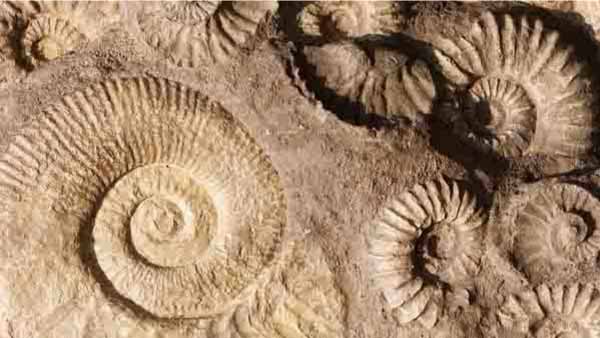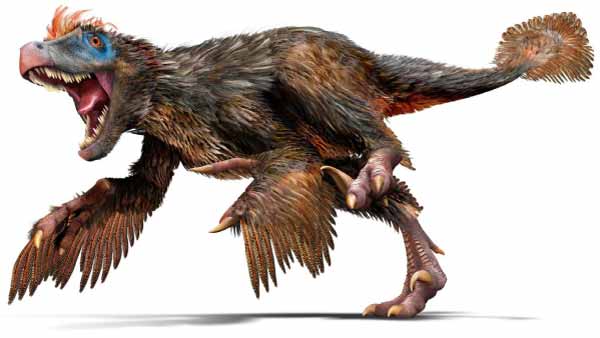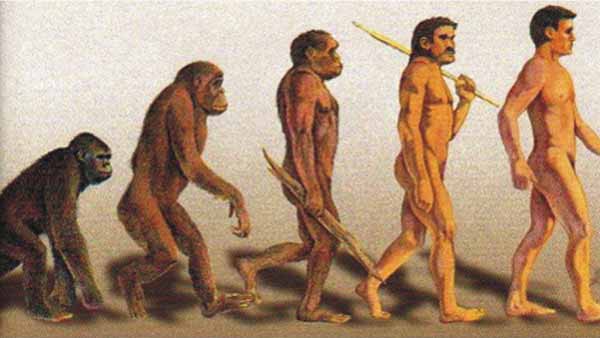Taphonomy is the branch of paleontology that studies the processes involved in the formation, preservation and alteration of fossil remains. This includes the analysis of the processes of decomposition and disintegration of soft tissues, the disarticulation and dissociation of bones, the action of transport and sedimentation agents, the diagenesis of sediments and the preservation of remains in the fossil record.
Taphonomy is used to interpret how living organisms come to become fossils and how fossils can be used to reconstruct past ecosystems and the evolution of living things. Taphonomy can also provide information about environmental processes that influenced the formation and preservation of fossil remains, such as changes in climate, sea level, volcanic activity, and plate tectonics.
Analysis of the processes of decomposition and disintegration of soft tissues
The analysis of the processes of decomposition and disintegration of soft tissues is an important part of taphonomy. Soft tissue breakdown is a complex process involving a variety of biological, chemical, and physical factors. Biological factors include the activity of microorganisms and insects, while chemical factors include the action of acids and enzymes. Physical factors include exposure to sunlight and temperature.
Analysis of soft tissue breakdown can provide valuable information about the process of fossil formation. For example, if soft tissues have completely broken down prior to fossilization, there may be little or no record of the body’s smooth anatomy in the fossil record. On the other hand, if soft tissues are partially or completely preserved, they can provide valuable information about the internal anatomy of the organism and its relationship to the environment.
Analysis of soft tissue decomposition can also provide insight into the factors that influenced the preservation of fossil remains. For example, if soft tissues are preserved in an anoxic environment (without oxygen), they are more likely to be preserved longer. On the other hand, if soft tissues are exposed to oxidizing conditions, they are more likely to break down quickly.
Analysis of the processes of decomposition and disintegration of soft tissues is essential to understand how organisms become fossils and how fossil remains are preserved over time.
Disarticulation and dissociation of bones
The disarticulation and dissociation of bones is another important aspect that is studied in taphonomy. It refers to the separation of bones into joints, while dissociation refers to the separation of bones in places where there are no joints.
Disarticulation and dissociation can occur due to a variety of factors, such as the activity of scavengers, the action of water, and exposure to the elements. For example, scavengers can tear bones from a carcass while searching for food, and streams of water can carry the bones and separate them from each other.
Analysis of bone disarticulation and dissociation can provide valuable information about the formation of a fossil and its preservation in the fossil record. For example, if the bones are very disjointed and dissociated, they may not provide much information about the anatomy of the organism. However, if the bones are well articulated and preserved in their original position, they can provide valuable information about the position of the body and the posture of the organism.
In addition, bone disarticulation and dissociation can also provide insight into environmental factors that influenced the preservation of fossil remains. For example, if the bones are well articulated and preserved in an original position, they are likely to have been buried quickly and protected from the activity of scavengers and the action of water. On the other hand, if the bones are very disjointed and dissociated, it is likely that they have been exposed for a long time to the action of water and the elements.
Analysis of bone disarticulation and dissociation is essential to understanding how organisms come to become fossils and how fossil remains are preserved in the fossil record.
The action of transport and sedimentation agents
The action of transport and sedimentation agents is another important aspect of taphonomy. Transport agents include water, wind and glaciers, and can transport fossil remains from their original place of death to the place where they will be deposited and fossilized. Sedimentation refers to the process of deposition of sediments on fossil remains, covering them and protecting them from decomposition and alteration.
The action of transport and sedimentation agents can have a major impact on the preservation and fossil record of an organism. For example, fossil remains can be transported long distances and can be exposed to different environmental conditions along their journey. This can result in a variety of physical and chemical changes that can alter the original appearance of the fossil remains.
Sedimentation can also be an important factor in the preservation of fossil remains. If the remains are quickly deposited in a conservation-friendly environment, such as an anoxic environment, they can be preserved in their original form. On the other hand, if the remains are exposed to oxidizing conditions and deposited slowly, they can decompose and be altered before being fossilized.
The action of transport and sedimentation agents is an important factor in the preservation and fossil record of an organism. Analysis of these processes in taphonomy can provide valuable insights into how fossil remains have been moved and deposited, and how they have been preserved over time.
The diagenesis of sediments and the preservation of remains in the fossil record
The diagenesis of sediments and the preservation of remains in the fossil record is another important aspect studied in taphonomy. This refers to the physical, chemical and biological processes that act on sediments after they have been deposited, and can have a major impact on the conservation of fossil remains.
Diagenesis can include processes such as compaction, cementation and recrystallization of sediments. These processes can cause changes in the texture and composition of sediments and can affect the preservation of fossil remains.
For example, sediment compaction can cause deformation and collapse of fossil remains, which can make it difficult to identify and study. Cementation can bind sediment grains together, which can protect and stabilize fossil remains, but can also make them difficult to extract and analyze. Recrystallization can alter the chemical composition of sediments and fossil remains, making them difficult to identify and study.
In addition, diagenesis can also influence the spatial and temporal distribution of fossil remains in the fossil record. For example, diagenesis can concentrate fossil remains in certain layers of sediment or disperse in different places.
The diagenesis of sediments can have a major impact on the preservation and fossil record of organisms. Analysis of these processes in taphonomy can provide valuable insights into how fossil remains have been preserved and distributed in the fossil record over time.
Environmental processes such as climate change
Environmental processes, such as climate changes, are also important in taphonomy and can have a major impact on the preservation and fossil record of organisms. Climate changes can influence the distribution of organisms over time and can affect the processes of decomposition and fossilization.
For example, changes in temperature and humidity can affect the rate of decomposition and alteration of fossil remains. Changes in precipitation can influence the amount and composition of sediments that are deposited and the ability of sediments to preserve fossil remains.
In addition, changes in climate can influence the geographical distribution of organisms and the diversity of biological communities. Changes in the geographic distribution and diversity of biological communities can affect the likelihood that an organism will be preserved and its fossil record.
For example, climate changes can result in the extinction of certain species or the emergence of new species. These changes in biodiversity can affect the likelihood that the fossil remains of certain organisms will be preserved and their fossil record.
Environmental processes, such as climate changes, can have a major impact on taphonomy and the preservation and fossil record of organisms. Analysis of these processes can provide valuable insights into how organisms have interacted with their environment and how they have been preserved and recorded in the fossil record.
Environmental processes such as sea level
Environmental processes, such as sea level, are also important in taphonomy and can have a major impact on the preservation and fossil record of organisms. Changes in sea level can influence the geographical distribution of organisms and sedimentation and erosion processes in coastal areas.
When sea levels rise, areas that were previously exposed flood and become marine environments. This can result in the deposition of marine sediments and the preservation of fossil remains of marine organisms. On the other hand, when sea level drops, it can expose areas that were previously covered by the sea and create new terrestrial environments. This can result in the preservation of fossil remains of terrestrial organisms.
Changes in sea level can influence:
In addition, changes in sea level can influence erosion in coastal areas. Coastal areas are particularly vulnerable to erosion and degradation due to wave action and weathering processes. These processes can destroy fossil remains found in coastal areas and reduce their preservation.
Changes in sea level can also influence the geographic distribution of organisms, especially those living in coastal environments. Organisms living on the coast can be affected by changes in food availability and water quality, and this can influence their ability to survive and preserve.
In summary, changes in sea level are an important environmental factor that can influence the preservation and fossil record of organisms. Analysis of these processes can provide valuable insights into how organisms have interacted with their environment and how they have been preserved and recorded in the fossil record.
Environmental processes such as volcanic activity
Volcanic activity is an important environmental process that can have a major impact on taphonomy and on the preservation and fossil record of organisms. Volcanic activity can influence sediment deposition, the chemical composition of water and soil, and the geographical distribution of organisms.
When a volcano erupts, it can release large amounts of ash, lava and other volcanic materials. These materials can be deposited in surrounding areas and can quickly bury organisms found in those areas. Rapid sedimentation can provide a favorable burial environment for the preservation of fossil remains.
In addition, volcanic materials can contain a wide variety of chemicals and minerals, which can influence the chemical composition of water and soil. This can influence the ability of organisms to preserve and fossilize. For example, some minerals can act as natural preservation agents for fossil remains.
On the other hand, volcanic activity can also influence the geographical distribution of organisms. The eruption of a volcano can destroy habitats and reduce biological diversity in a particular area. This can influence the likelihood of certain organisms being preserved and their fossil record.
Volcanic activity is an important environmental factor that can influence the preservation and fossil record of organisms. Analysis of these processes can provide valuable insights into how organisms have interacted with their environment and how they have been preserved and recorded in the fossil record.
Environmental processes such as plate tectonics
Plate tectonics is an important environmental process that can have a major impact on taphonomy and the preservation and fossil record of organisms. It refers to the movement of the tectonic plates that make up the Earth’s surface, and can influence the geographical distribution of organisms, the formation of sedimentary basins, and volcanic and seismic activity.
Plate tectonics can influence:
The movement of tectonic plates can influence the geographical distribution of organisms. When plates move, they can separate or join continents, form new geographic barriers, and change ocean circulation. This can influence the ability of organisms to move and colonize new habitats, and can influence their likelihood of being preserved and fossilized.
In addition, plate tectonics can influence the formation of sedimentary basins, which are depressions on the earth’s surface where sediments accumulate. These sedimentary basins can provide favorable burial environments for the preservation of fossil remains. For example, the formation of the Williston Basin in North America, associated with the movement of tectonic plates, has provided an important fossil record of Paleozoic marine and terrestrial animals.
Plate tectonics can also influence volcanic and seismic activity. When plates move, they can create areas of tension in the Earth’s crust that can result in the formation of volcanoes and earthquakes. Volcanic and seismic activity can destroy habitats and affect the geographical distribution of organisms, and can also influence the preservation and fossilization of fossil remains.
In summary, plate tectonics is an important environmental factor that can influence the preservation and fossil record of organisms. Analysis of these processes can provide valuable insights into how organisms have interacted with their environment and how they have been preserved and recorded in the fossil record.


